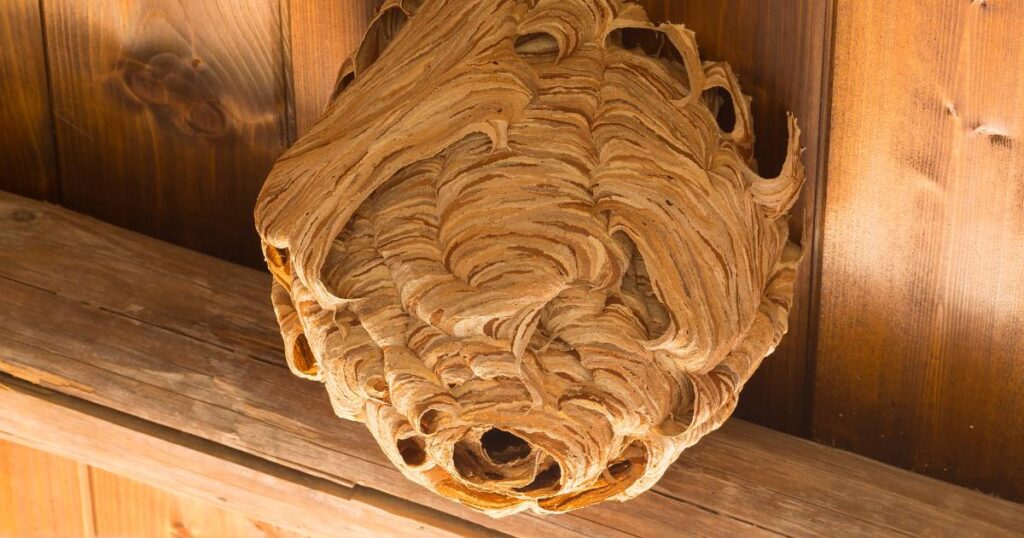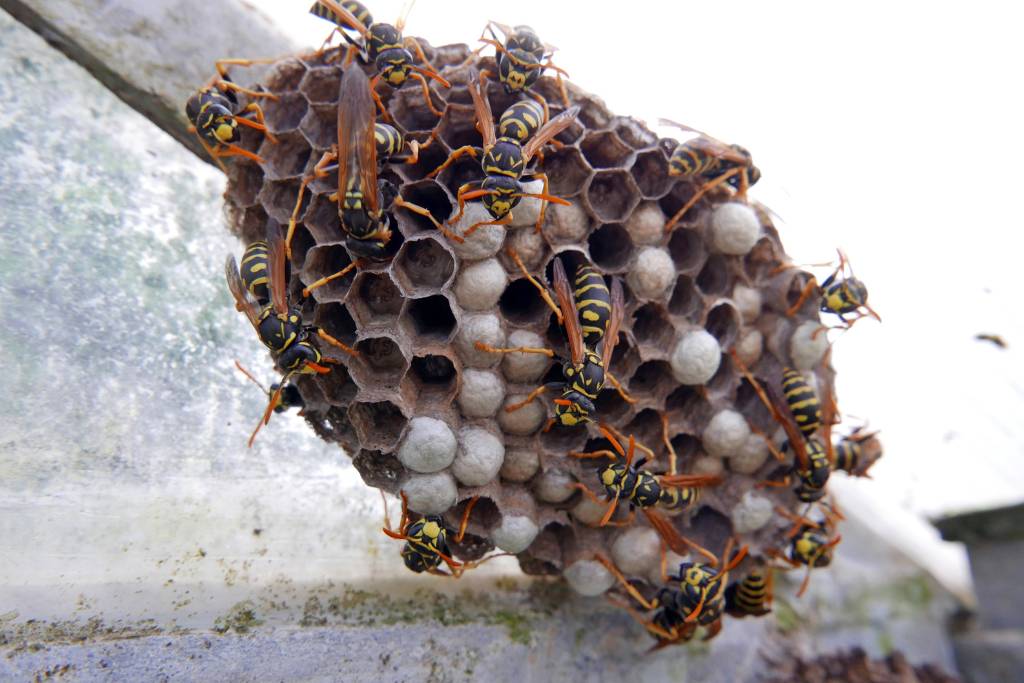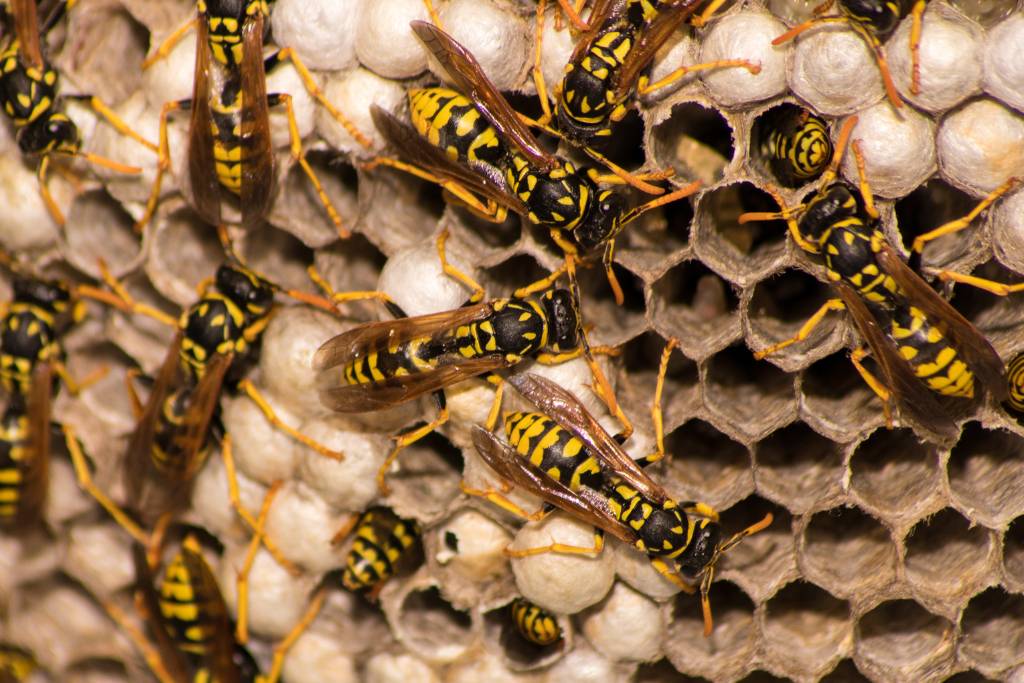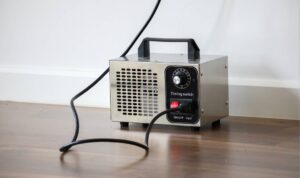Allowing a wasp infestation to persist in the attic poses numerous dangers and risks. The most immediate threat is the potential for painful and sometimes dangerous stings, especially if the wasps feel threatened. Additionally, there is the possibility of allergic reactions for those sensitive to wasp venom. With the rapid expansion of the wasp population, the overall risk of stings and allergic reactions increases.
Furthermore, a large wasp infestation can cause significant damage to the attic. The disruptions to daily activities due to the presence of wasps can make it difficult to access the attic, posing risks to individuals attempting to do so. In addition, the structural integrity of the attic could be compromised due to the construction of wasp nests, potentially leading to costly repairs.
In conclusion, it is crucial to address wasp infestations in the attic promptly to mitigate the dangers and risks associated with them. It is essential to prioritize the removal of the infestation to avoid potential harm to individuals and prevent damage to the attic’s structure.
Potential dangers and risks associated with wasp nests
Wasp nests can pose potential dangers and risks to both humans and animals. These stinging insects can become aggressive when their nests are disturbed, leading to painful stings and allergic reactions. The proximity of wasp nests to occupied areas can also increase the risk of encounters and potential harm. It is important for individuals to be aware of the potential dangers and risks associated with wasp nests in order to avoid disturbances and take necessary precautions for their safety and well-being.
Identifying Wasp Infestations in the Attic
Key signs of a wasp infestation in the attic include increased wasp activity in and around the area, buzzing sounds, and the presence of nests or hives. If you notice a higher number of wasps coming and going from your attic, hear buzzing sounds, or spot nests or hives, it is likely that your attic has been taken over by wasps.
Wasps can pose potential danger as they are known for their painful sting and aggressive behavior, especially when their nest or hive is disturbed. Their sting can cause allergic reactions in some individuals, leading to serious health issues. Additionally, when a wasp stings, it releases pheromones that signal other wasps to attack, making them particularly aggressive when feeling threatened.
It is important to address a wasp infestation in the attic promptly to avoid potential harm and prevent the infestation from growing further. Seek professional help to safely remove the nests or hives and eliminate the infestation to ensure the safety of your home and family.

Signs of a wasp infestation
The most common signs of a wasp infestation include seeing tiny scratches on wooden surfaces, observing wasps gathering materials for nest construction, and noticing an increased presence of wasps around your property. These signs often indicate that a wasp colony is nearby and may be establishing a nest in or around your home.
Potential dangers and disruptions caused by a wasp infestation are numerous. Wasps can become aggressive when their nest is disturbed, posing a threat to anyone in the vicinity. Their stings can be painful and in some cases, cause severe allergic reactions. Wasp nests can also cause damage to your property, as they often chew on wooden structures as they build their nests. Furthermore, the buzzing and presence of wasps can disrupt outdoor activities and make it difficult to enjoy your own backyard.
Immediate action should be taken if you observe signs of a wasp infestation to prevent the situation from escalating. Contacting a pest control professional is crucial for safely removing the nest and addressing the infestation to ensure the safety and comfort of your family and property. Ignoring a wasp infestation can lead to increased risks and disruptions, making it essential to address the issue promptly.
Differentiating between species of wasps found in attics
Wasps can be a common nuisance for homeowners, particularly when they make their nests in attics. Understanding the different species of wasps that can be found in attics is important for proper removal and prevention. By being able to differentiate between the various types of wasps, homeowners can better protect themselves and their property from potential stings and damage.
Understanding Wasp Behavior and Habits
Wasps are known for their aggressive behavior, especially during the late summer and early fall when they are busy foraging for food. They are attracted to sweet substances such as fruit, nectar, and sugary drinks, as well as protein-rich foods like other insects. Wasps use various materials, including wood pulp and saliva, to build their nests, which can be found in hidden areas like under eaves, in the ground, or in trees and bushes. Signs of wasp activity include seeing them flying in and out of an area, as well as finding a constant presence of wasps near food sources.
To identify and locate wasp nests on your property, carefully observe the areas where you frequently spot wasps. Look for small holes in the ground or paper-like nests attached to structures. To get rid of wasps naturally, you can use methods such as hanging up fake wasp nests, planting certain herbs and flowers that repel wasps, and using homemade deterrent sprays made from essential oils or soapy water.
The seasonal behavior of wasps is influenced by the availability of food and the need to protect and maintain their nests. With the arrival of cooler temperatures, wasps become less active and may abandon their nests. Understanding their seasonal behavior can help in managing their habits and minimizing their presence on your property.
Social structure of wasp colonies
Wasp colonies have a hierarchical social structure with various roles and responsibilities. At the top of the hierarchy is the queen, whose main function is reproduction. She lays eggs that will develop into worker wasps, who are responsible for building and maintaining the nest, foraging for food, and caring for the young. Drones, the male wasps, have the sole purpose of mating with the queen.
The social structure can differ between species, influencing the size and behavior of the colony. Some species have large colonies with a highly organized division of labor, while others may have smaller, less structured colonies.
Communication, division of labor, and defense mechanisms are key factors contributing to the success and survival of a wasp colony. Members of the colony use pheromones to communicate and coordinate their activities. The queen, workers, and drones work together to ensure the survival of the colony, with each playing a crucial role in its functioning.
In conclusion, the social structure of a wasp colony is a complex system of hierarchy and cooperation, with the queen, workers, and drones each contributing to the overall success and survival of the colony.

Life cycle of a wasp
The life cycle of a wasp begins with a mated queen building a nest in the spring. She lays her eggs and cares for the first batch of larvae until they mature into worker wasps. These worker wasps then take over the care of the nest, including feeding the larvae and protecting the colony. Throughout the summer, the colony grows in size, with new worker wasps being produced.
In the fall, the colony reaches its peak size, and new queens and male wasps are produced. The new queens leave the nest to find a mate, while the male wasps leave the nest to mate with the new queens. The original queen, worker wasps, and male wasps die off as the temperature drops, and the nest is abandoned.
The lifespan of a wasp colony is typically only one season, with the nest being used for a few months before being abandoned. The construction of wasp nests involves the queen chewing wood fibers and mixing it with her saliva to create a paper-like material. She then builds small hexagonal combs within the nest to house the eggs and larvae. Overall, the life cycle of a wasp is a seasonal one, with the colony starting from a single queen and growing to include workers, new queens, and male wasps before eventually dying off in the fall.
Why attics are attractive nesting spots for wasps
Attics serve as the perfect nesting spot for wasps due to their secluded, dark, and warm environment. With the availability of shelter from the elements, an abundance of building materials for constructing nests, and a lack of disturbance from human activity, attics are an ideal location for wasps to build their colonies. Additionally, the small openings and cracks in attics provide easy access and protection from potential predators. The appeal of an attic as a nesting spot for wasps lies in the privacy and safety it offers, making it a prime location for these stinging insects to establish their home.
Assessing the Severity of the Infestation
.Signs of a wasp infestation in the attic can include the presence of nests, increased wasp activity, and buzzing sounds. Visibly seeing nests or an influx of wasps coming and going from the attic are clear indicators of a potential infestation. The buzzing sounds from the wasps within the attic space can also be a sign of their presence.
A severe infestation can pose significant threats and risks, especially for those allergic to wasps. Aggressive behavior from the wasps can result in painful stings, and for those with allergies, these stings can be life-threatening. Additionally, a large infestation can cause structural damage to the attic area.
Assessing the severity of the infestation involves conducting a visual inspection of the attic space to locate nests and observe the behavior of the wasps. Taking note of their activity level and whether they display aggressive behavior can help gauge the extent of the infestation.
It is important to address a wasp infestation promptly to avoid potential risks and threats, especially for those who are allergic to wasp stings. Seek professional assistance to safely and effectively remove the infestation from the attic.
Determining the size and location of the nest(s)
Wasp nests can be found in various locations, including inside walls, in attics or basements, and in outdoor spaces like garages or sheds. They may also build their nests in trees, bushes, or under eaves. The size of a wasp nest can vary, but they can reach the size of basketballs or even larger by mid-summer.
As for nesting habits, queen wasps are responsible for establishing the initial nest. They construct the nest from chewed wood, which gives the nest its distinctive papery walls. The queen creates a small paper nest to begin laying her eggs, and as the colony grows, the worker wasps take over the nest-building duties. The nest’s size and structure can vary based on the species of wasps and their environment.
It’s important to locate and identify wasp nests early in order to prevent them from becoming a larger problem. If a nest is found in or around your home, it’s best to contact a professional pest control service for safe removal.
Identifying potential entry points into the attic
When it comes to identifying potential entry points into the attic, it’s crucial to be thorough and observant. From small cracks and crevices to improperly sealed vents and openings, there are many possible ways for pests, animals, and even small debris to find their way into this often overlooked space. By understanding where these entry points are, you can take the necessary steps to seal them off and prevent any unwanted intruders from causing damage or creating a nuisance. This process not only helps to protect your home and belongings but also maintains a clean and safe environment within the attic.
Safety Precautions Before Taking Action
Before taking any action, it is crucial to consider important safety precautions to ensure the well-being of everyone involved. This includes wearing appropriate protective gear such as helmets, gloves, goggles, and masks to minimize the risk of injury. It is also vital to carefully evaluate the potential risks involved in the intended action and take necessary precautions to mitigate them. This may involve conducting a thorough risk assessment and developing a safety plan to address any potential hazards.
Furthermore, it is essential to ensure that proper safety measures are in place before proceeding. This may include implementing emergency procedures, providing adequate training to all individuals involved, and having necessary safety equipment readily available. Additionally, it is important to communicate and enforce safety protocols to everyone involved to prevent accidents and injuries.
By considering these safety precautions, individuals can minimize the risk of harm and create a safer environment for all. It is important to prioritize safety in all actions to prevent any potential accidents or injuries.

Protective clothing and gear required
for wasp removal. When removing wasp nests, it is crucial to wear the proper protective clothing and gear to prevent potential stings and injury.
First and foremost, it is essential to wear long pants, a long-sleeved shirt, and a thick jacket made of tightly woven fabric. This will help protect your skin from any potential wasp stings. Additionally, gloves should be worn to protect your hands from stings. Covering up as much skin as possible is key to staying safe during wasp removal.
In addition to clothing, it is important to wear socks, shoes, and a hat to provide further protection. Closed-toe shoes will protect your feet from stings, while a hat can help shield your face and head. Lastly, consider wearing a bandana to cover your face and further protect against stings.
By wearing the appropriate protective clothing and gear, you can minimize the risk of being stung during wasp removal, allowing you to safely and effectively address any wasp-related issues.
Step-by-step to get rid of wasps in attic:
- Identify the nest: Before taking any action, it is important to locate the wasp nest in your attic. Look for signs such as visible nests, buzzing sounds, or increased wasp activity in that area.
- Plan your approach: Once you have identified the nest, it’s essential to plan your approach carefully. Consider factors such such as the size and location of the nest, accessibility, and potential risks involved.
- Wear protective clothing: As mentioned earlier, it is crucial to wear appropriate protective clothing and gear before attempting to remove the wasps. This includes long pants, a long-sleeved shirt, gloves, closed-toe shoes, and special mask to cover your face.
- Use a wasp spray: Purchase a wasp spray specifically designed for nest removal. Follow the instructions on the product carefully and apply the spray directly onto the nest from a safe distance.
- Wait for the wasps to die off: After spraying the nest, it may take some time for all the wasps to die off. Avoid approaching the nest until you are certain that all activity has ceased. This may take several hours, so it is important to be patient and wait for the wasps to be eliminated.
- Remove the nest: Once you are certain that all the wasps have died off, carefully remove the nest from your attic. Use a long stick or pole to knock it down, being cautious not to damage it in the process. Follow the instructions provided on the wasp spray product for safe and effective nest removal. Take the time to read and understand the directions before using the spray. This will ensure that you are using it correctly and maximizing its effectiveness. Allow time for the spray to work. After applying the wasp spray, give it enough time to take effect. Be patient and wait for all activity around the nest to cease before attempting to remove the nest.
- Dispose of the nest: Once the nest has been removed, carefully dispose of it in a sealed plastic bag. This will prevent any remaining wasps from escaping and potentially causing harm.
- Seal off entry points: To prevent future infestations, it is important to seal off any entry points that may be allowing wasps to access your attic. Ins pect your attic for any cracks or openings and seal them with caulk or expanding foam. This will help prevent wasps from entering your attic in the future.
- Clean and sanitize the area: After removing the nest, it is important to clean and sanitize the area to eliminate any pheromone trails that may attract other wasps. Use a mild detergent and water solution to clean the affected area, making sure to scrub away any remaining residue or debris. Rinse the area thoroughly and allow it to dry completely.

FAQ’S:
What are yellow jackets?
Yellow jackets are a type of social wasp that are commonly found in North America. They are known for their yellow and black striped pattern and can be quite aggressive if provoked.
How can I get rid of yellow jackets?
One effective method to control yellow jackets is by using wasp traps. These traps are designed to lure and capture the wasps, reducing their population in your area.
What are social wasps?
Social wasps, such as yellow jackets and paper wasps, live in colonies with a queen and worker wasps. They build nests, often made of paper-like materials, where the queen lays eggs and the workers care for the young.
What is the difference between yellow jackets and paper wasps?
Yellow jackets are a type of social wasp known for their aggressive behavior, while paper wasps are also social wasps but tend to be less aggressive. Paper wasps build open, umbrella-shaped nests made of paper-like materials and have longer bodies compared to yellow jackets.
Are there different species of wasps?
Yes, there are many species of wasps. Some common ones include yellow jackets, paper wasps, and bald-faced hornets. Each species has distinct characteristics and behaviors.
Can wasps build nests on tree branches?
Yes, wasps can build nests on tree branches. They often select locations with shelter and protection, including tree branches, eaves of buildings, and even underground.
What are solitary wasps?
Solitary wasps are a type of wasp that do not live in colonies like social wasps. Instead, they live alone and do not exhibit the same aggressive behavior. They are still important for pest control as they prey on insects.
When should I call a professional pest control company for wasp nest removal?
If you have a large or inaccessible wasp nest, it is recommended to call a professional pest control company for safe and effective removal. This is particularly important if the nest belongs to aggressive species like yellow jackets or bald-faced hornets.
Are dead wasps a cause for concern?
Finding a few dead wasps is usually not a major concern. However, if you frequently find large numbers of dead wasps, it may indicate the presence of a nearby nest or infestation, and it is advisable to seek professional pest control assistance.
What should I do if I discover thousands of wasps?
Discovering a large number of wasps, especially thousands, can be quite alarming. It is important to prioritize your safety and contact a professional pest control company immediately, as attempting to handle such a situation on your own can be dangerous.
Why hire a professional pest control company for wasp-related issues?
Professional pest control companies have the knowledge, experience, and proper equipment to safely handle wasp-related issues. They can effectively identify and eliminate wasp nests, ensuring the safety of you and your property.
Need professionals to get rid of the wasps in your attic or another rodent control service? Contact Attic Crew now.



